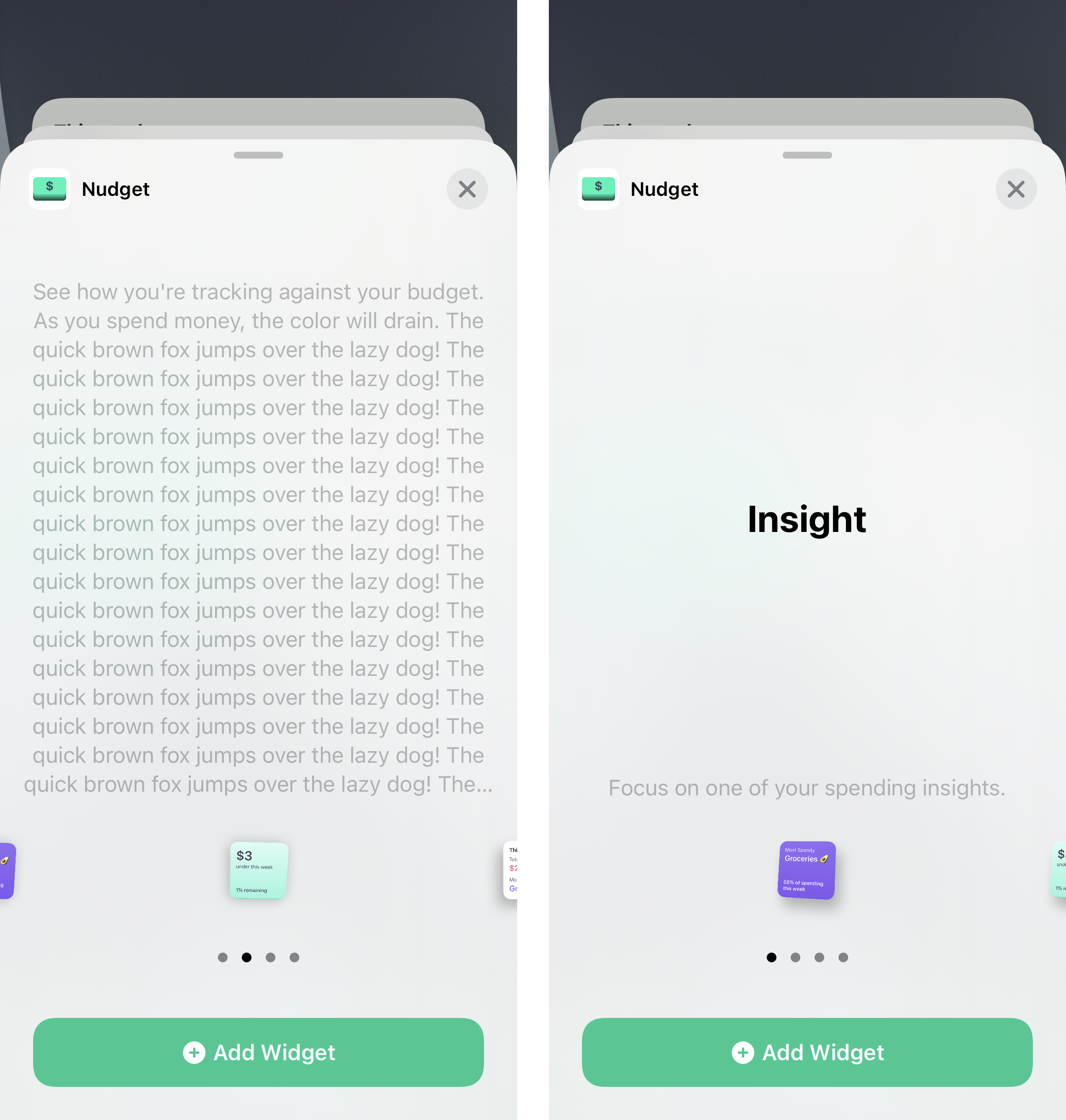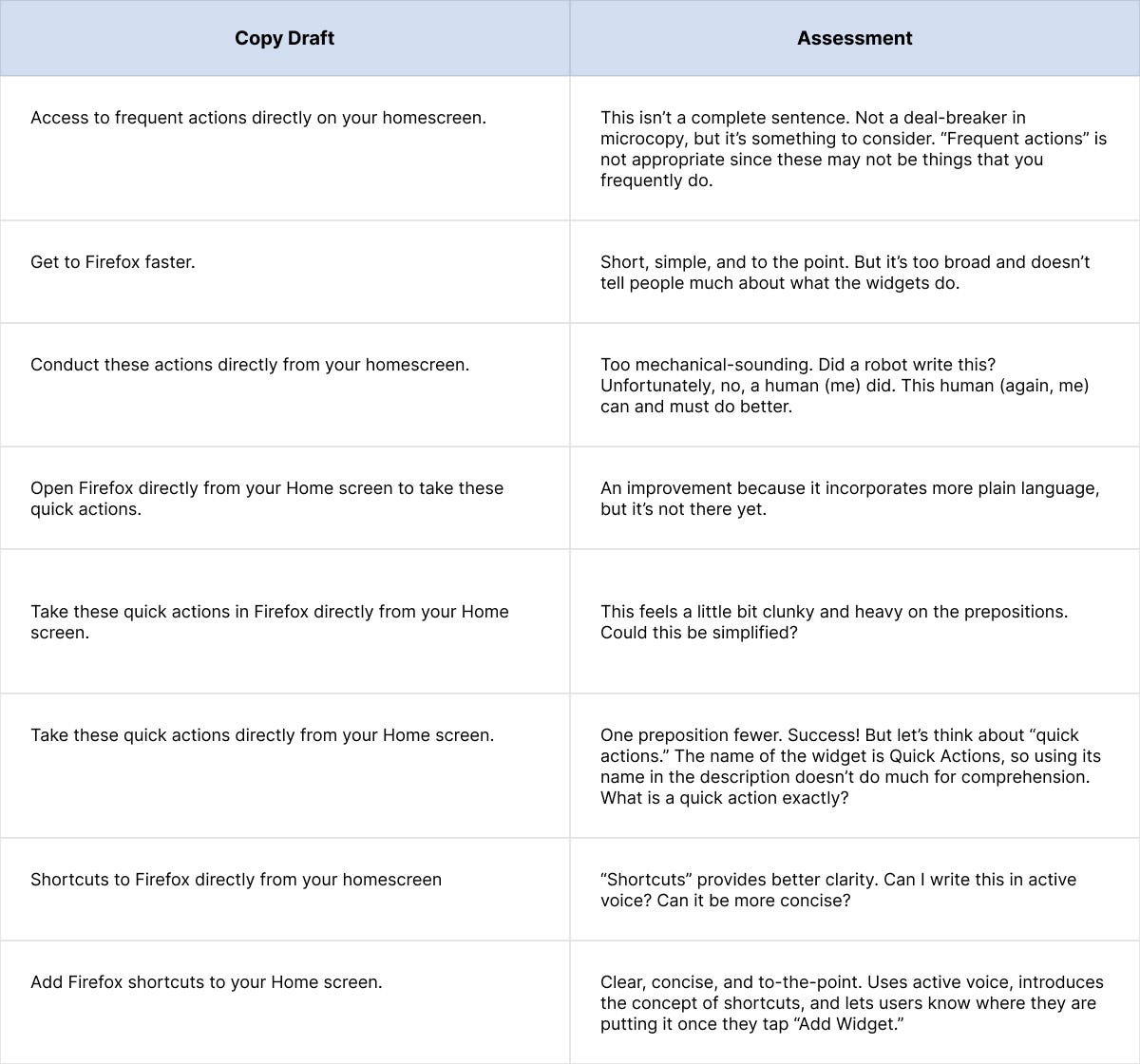
Photo by Amador Loureiro on Unsplash.
The small bits of copy you see sprinkled throughout apps and websites are called microcopy. As content designers, we think deeply about what each word communicates.
Microcopy is the tidiest of UI copy types. But do not let its crisp, contained presentation fool you: the process to get to those final, perfect words can be messy. Very messy. Multiple drafts messy, mired with business and technical constraints.
Here’s a secret about good writing that no one ever tells you: When you encounter clear UX content, it’s a result of editing and revision. The person who wrote those words likely had a dozen or more versions you’ll never see. They also probably had some business or technical constraints to consider, too.
If you’ve ever wondered what all goes into writing microcopy, pour yourself a micro-cup of espresso or a micro-brew and read on!

Blaise Pascal, translated from Lettres Provinciales
1. Understand the component and how it behaves.
As a content designer, you should try to consider as many cases as possible up front. Work with Design and Engineering to test the limits of the container you’re writing for. What will copy look like when it’s really short? What will it look like when it’s really long? You might be surprised what you discover.

Before writing the microcopy for iOS widgets, I needed first to understand the component and how it worked.
Apple recently introduced a new component to the iOS ecosystem. You can now add widgets the Home Screen on your iPhone, iPad, or iPod touch. The Firefox widgets allow you to start a search, close your tabs, or open one of your top sites.
Before I sat down to write a single word of microcopy, I would need to know the following:
- Is there a character limit for the widget descriptions?
- What happens if the copy expands beyond that character limit? Does it truncate?
- We had three widget sizes. Would this impact the available space for microcopy?
Because these widgets didn’t yet exist in the wild for me to interact with, I asked Engineering to help answer my questions. Engineering played with variations of character length in a testing environment to see how the UI might change.

Engineering tried variations of copy length in a testing environment. This helped us understand surprising behavior in the template itself.
We learned the template behaved in a peculiar way. The widget would shrink to accommodate a longer description. Then, the template would essentially lock to that size. Even if other widgets had shorter descriptions, the widgets themselves would appear teeny. You had to strain your eyes to read any text on the widget itself. Long story short, the descriptions needed to be as concise as possible. This would accommodate for localization and keep the widgets from shrinking.
First learning how the widgets behaved was a crucial step to writing effective microcopy. Build relationships with cross-functional peers so you can ask those questions and understand the limitations of the component you need to write for.
2. Spit out your first draft. Then revise, revise, revise.

Mark Twain, The Wit and Wisdom of Mark Twain
Now that I understood my constraints, I was ready to start typing. I typically work through several versions in a Google Doc, wearing out my delete key as I keep reworking until I get it ‘right.’

I wrote several iterations of the description for this widget to maximize the limited space and make the microcopy as useful as possible.
Microcopy strives to provide maximum clarity in a limited amount of space. Every word counts and has to work hard. It’s worth the effort to analyze each word and ask yourself if it’s serving you as well as it could. Consider tense, voice, and other words on the screen.
3. Solicit feedback on your work.
Before delivering final strings to Engineering, it’s always a good practice to get a second set of eyes from a fellow team member (this could be a content designer, UX designer, or researcher). Someone less familiar with the problem space can help spot confusing language or superfluous words.
In many cases, our team also runs copy by our localization team to understand if the language might be too US-centric. Sometimes we will add a note for our localizers to explain the context and intent of the message. We also do a legal review with in-house product counsel. These extra checks give us better confidence in the microcopy we ultimately ship.
Wrapping up
Magical microcopy doesn’t shoot from our fingertips as we type (though we wish it did)! If we have any trade secrets to share, it’s only that first we seek to understand our constraints, then we revise, tweak, and rethink our words many times over. Ideally we bring in a partner to help us further refine and help us catch blind spots. This is why writing short can take time.
If you’re tasked with writing microcopy, first learn as much as you can about the component you are writing for, particularly its constraints. When you finally sit down to write, don’t worry about getting it right the first time. Get your thoughts on paper, reflect on what you can improve, then repeat. You’ll get crisper and cleaner with each draft.
Acknowledgements
Thank you to my editors Meridel Walkington and Sharon Bautista for your excellent notes and suggestions on this post. Thanks to Emanuela Damiani for the Figma help.
This post was originally published on Medium.